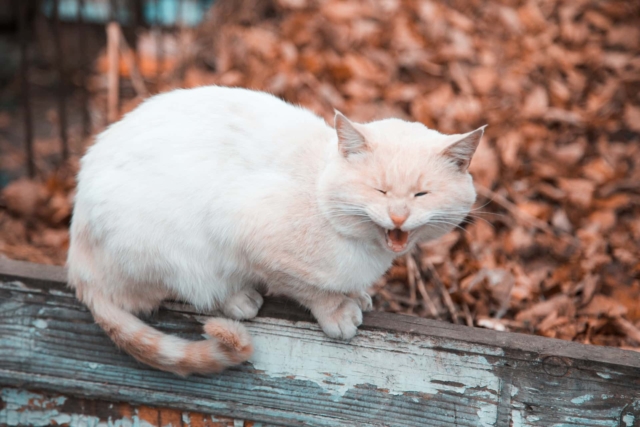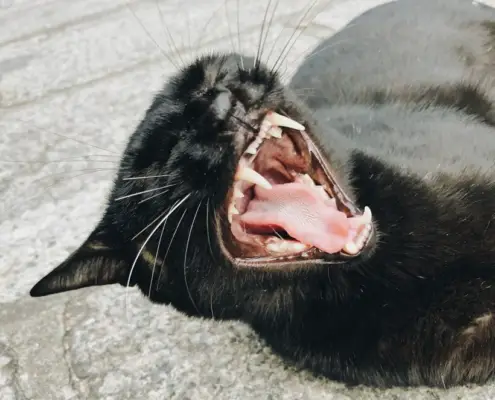
Cats are fascinating creatures with unique behaviors that have both puzzled and captivated us for centuries. Whether you’re a cat owner or simply intrigued by these enigmatic animals, understanding their behavior is key to creating a harmonious and fulfilling relationship. In this article, we delve into the intricacies of cat behavior, focusing on aggression, affection, territory marking, and playfulness.
As cat lovers, it’s essential to recognize the importance of understanding cat behavior. By gaining insights into their instincts and tendencies, we can provide them with a nurturing environment that meets their needs and enriches their lives.
Aggression
Aggression is a behavior that is often misunderstood in cats. In this section, we explore the causes and triggers of aggression, ranging from fear and territoriality to redirected aggression. We also provide valuable tips on how to handle and prevent aggressive behavior, ensuring the safety and well-being of both your cat and yourself.
Aggression in cats can stem from fear, territory disputes, or health issues. Signs of aggression can include hissing, growling, and physical attacks. This behavior should be addressed promptly to avoid injury to humans or other pets in the household.
By understanding these common cat behavior problems, we can better respond to our cats’ needs and provide them with a safe and loving environment in which they can thrive.
Affection
Cats have a reputation for being aloof, but they are also capable of displaying deep affection towards their human companions. We unravel the subtle signs of affection in cats, such as purring, kneading, and head-butting. Additionally, we offer insights into how to build a strong bond with your feline friend, fostering a loving and trusting relationship.
Territory Marking
Territory marking is a natural behavior for cats, but it can sometimes be challenging for pet owners to manage. We explore the reasons behind territory marking and provide practical tips for effectively managing this behavior. From creating designated areas to utilizing pheromone sprays, we help you maintain a harmonious living space for both you and your cat.
Playfulness
Play is an integral part of a cat’s life, providing physical exercise, mental stimulation, and an outlet for their natural hunting instincts. We highlight the importance of play for cats of all ages and provide a range of engaging playtime activities to keep your feline companion entertained and fulfilled.
Expert Opinions and Scientific Research
To further enrich our understanding of cat behavior, we include insights from experts in the field. These professionals offer valuable perspectives on various aspects of cat behavior, shedding light on the underlying motivations and cognitive abilities of our feline friends. Additionally, we present key findings from scientific studies that contribute to our knowledge of cat behavior.
Common Cat Behavior Problems
Just like humans, cats can exhibit problematic behaviors that may be a source of concern or frustration for their owners. Understanding these common issues is crucial in addressing them effectively and maintaining a harmonious co-existence.
Impact of Environment on Cat Behavior
The environment where a cat lives can significantly influence its behavior. In a safe, secure, and stimulating environment, cats often display contentment and playfulness. They engage in exploration and interactive play, and comfortably express their natural behaviors like scratching, climbing, and hunting. However, a stressful or inadequate environment can trigger defensive behaviors like aggression and territory marking, or behavioral problems like inappropriate elimination or excessive grooming. It’s crucial to provide an environment that caters to a cat’s basic needs and natural behaviors, with enough resources like food, water, litter boxes, and safe resting and hiding places. Also, environmental enrichment, such as providing interactive toys, scratching posts, and access to elevated spaces, can enhance a cat’s quality of life and prevent many behavioral issues. An optimum environment supports a cat’s physical health and emotional well-being, thereby fostering positive and balanced behaviors.
Inappropriate Elimination
One of the most common issues cat owners face is inappropriate elimination, where cats urinate or defecate outside their litter box. This could be due to a variety of reasons, such as medical conditions, unclean litter boxes, or behavioral issues. It is vital to consult with a veterinarian if your cat starts exhibiting this behavior to rule out any health issues.
Excessive Meowing
While it’s normal for cats to meow to communicate, excessive meowing can be a sign of distress, discomfort, or attention-seeking behavior. It’s important to observe when and why your cat is meowing excessively to determine the underlying cause and address it accordingly.
Scratching
Scratching is a natural behavior for cats. They do it to mark their territory, exercise their claws, and stretch their bodies. However, when scratching becomes destructive, it can be a problem. Providing cat scratchers and regular claw trimming can help manage this behavior.
Common Cat Health Issues
Cats, like any other pets, can experience various health issues ranging from minor ailments to chronic diseases. It’s essential to be aware of these potential issues to ensure the well-being of your feline friend.
Feline Lower Urinary Tract Diseases (FLUTD)
FLUTD is a common condition affecting numerous cats. Symptoms may include difficulty in urinating, blood in the urine, and frequent urination. If you notice any of these symptoms, it’s crucial to seek veterinary assistance immediately.
Dental Disease
Poor dental health can lead to various problems such as tooth decay, gum disease, and bad breath. Regular dental check-ups and proper oral care can keep these problems at bay.
Obesity
Obesity in cats is a growing concern and can lead to other serious health problems like diabetes and heart disease. Regular exercise and a balanced diet are vital to manage a cat’s weight.
Kidney Disease
Chronic kidney disease is prevalent in older cats. Regular check-ups can help detect it early and manage the condition effectively.
Hyperthyroidism
This condition is common in older cats and is caused by an overactive thyroid gland. Symptoms include weight loss, increased thirst, and restlessness.
Always consult with a veterinarian if you notice any changes in your cat’s behavior or health. Regular check-ups and preventative care can go a long way in ensuring your cat leads a healthy and happy life.
Conclusion
By delving into the complex world of cat behavior, we hope to encourage responsible cat ownership and foster stronger bonds between humans and their feline companions. Understanding aggression, affection, territory marking, and playfulness allows us to meet our cats’ needs and create an environment where they can thrive and be truly content.
So, whether you’re a new cat owner or have shared your life with cats for years, join us on this journey of unraveling the mysteries and marvels of cat behavior. Together, let’s create a world where cats can be understood, appreciated, and loved for the unique individuals they are.
If you enjoyed my article, I would appreciate you sharing it with your network.

Sima Ndlebe
Sima writes for CatBuzz. He is interested in Cats, Health and Fitness, and Entrepreneurship.
Published: 31 October 2023
Related Articles
Disclaimer
The content found on CatBuzz.org is presented on an "as is" basis and is intended for general consumer information and education purposes only. Any utilization of this information is voluntary and solely at the user's own risk.
None of the articles or content should be regarded as, or used in place of, veterinary medical advice, diagnosis, or treatment. The information provided on the website is purely for educational and informational intentions and should not be considered a substitute for professional guidance from a veterinarian or other qualified expert. The articles are designed to inform consumers about veterinary healthcare and medical matters that may impact their cat's daily life. It should be noted that this website and its services do not constitute the practice of any form of veterinary medical advice, diagnosis, or treatment. CatBuzz.org explicitly disclaims any liability for any direct or indirect damages or losses that may arise from the use of or reliance on the information contained within the content.
Consumers must consult a veterinarian, veterinary specialist, or another qualified veterinary healthcare provider when seeking advice regarding their cat's health or medical conditions. It is important not to ignore, avoid, or postpone seeking medical advice from a veterinarian or other qualified veterinary healthcare provider solely based on information obtained from this website. If you believe that your cat may be experiencing a medical issue or condition, it is imperative to promptly contact a qualified veterinary healthcare professional.



